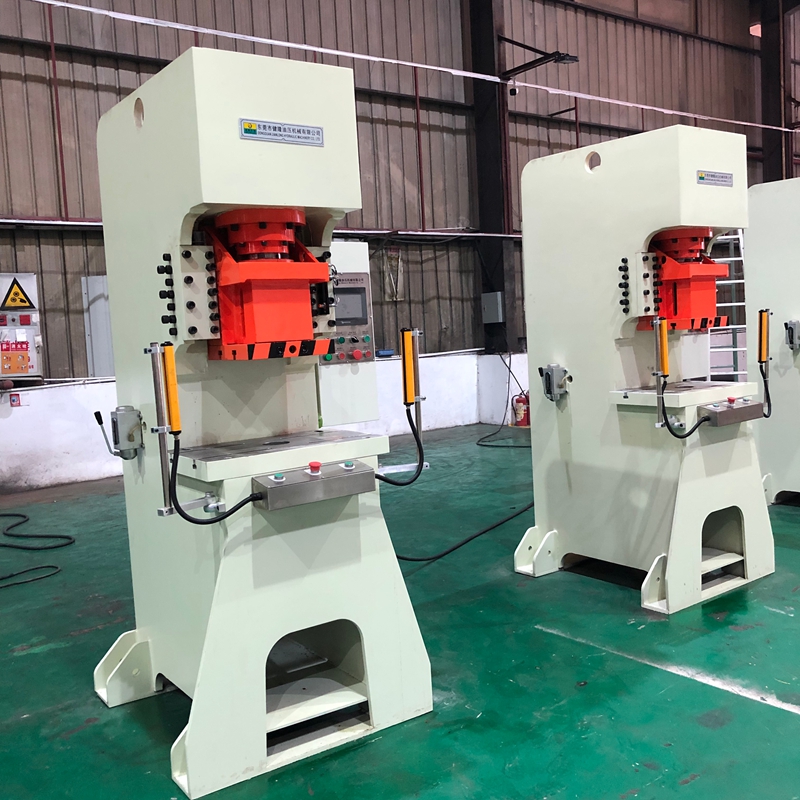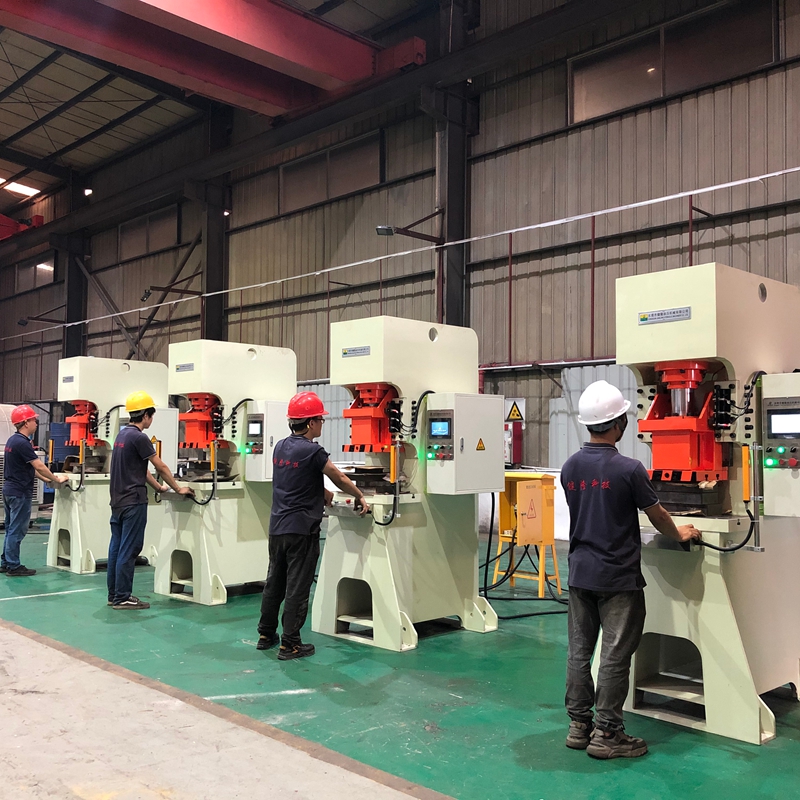A bow-type hydraulic punch/bender (also known as a C-type press brake) is an indispensable piece of equipment in modern sheet metal forming. Its core process utilizes the power provided by a hydraulic system to apply pressure to the sheet through upper and lower dies, causing plastic deformation and ultimately producing a workpiece with a predetermined shape and angle. Below, the editors of Jianlong Hydraulic Technology share the basic process flow of a bow-type hydraulic punch/bender for your reference!

1. Core Process Principle
The process is essentially three-point bending.
1.1 The upper die (punch) moves downward, applying pressure to the sheet placed on the lower die (V-groove).
1.2 The sheet is subjected to force between three contact points: the tip of the upper die and the two shoulders of the V-groove.
1.3 When the pressure exceeds the yield point of the material, the sheet undergoes permanent plastic deformation, bending within the space between the upper and lower dies (V-groove).
2. Basic Process Flow
2.1 Preparation Phase
2.1.1 Reading the Drawings: Determine the workpiece material, thickness, bend angle, bend dimensions, and sequence.
2.1.2 Tool Selection: Select appropriate upper and lower dies based on the plate thickness and bend radius.
2.1.3 Installing and Calibrating the Dies: Install the upper and lower dies on the slide and worktable, ensuring alignment and parallelism.
2.1.4 Programming/Setting Parameters: In the CNC system or manual mode, enter or adjust the Y-axis downward depth (controls the angle), bending force, back gauge position (controls the bend edge dimensions), etc.
2.2 Trial Bending and Adjustment
2.2.1 Trial Bending of First Piece: Perform a trial bend on a scrap piece of the same material as the workpiece.
2.2.2 Angle Measurement: Measure the angle of the test piece using a protractor.
2.2.3 Compensation Adjustment: If the angle is inaccurate, fine-tune the Y-axis downward depth to compensate for springback until the angle is acceptable. 2.1.4 Dimension Inspection: Check the bending position and dimensions to see if they meet the drawing requirements and adjust the back gauge.
2.3 Mass Production
2.3.1 After parameters stabilize, perform mass bending.
2.3.2 Key Operational Points:
■ Keep the sheet metal and back gauge close together to ensure accurate bend line positioning.
■ Keep hands away from the mold danger zone to ensure safety.
■ Regularly inspect workpieces to prevent batch rejection due to mold wear or fluctuations in sheet metal properties.
2.4 Completion and Cleaning
2.4.1 Remove the workpiece and perform subsequent processing such as deburring.
2.4.2 Clean the machine and work area.

The bow-type hydraulic punch press/bender process requires a high level of experience and skill. Its core lies in a deep understanding of the interplay between material properties, mold selection, and process parameters. For more information/suggestions on bow-type hydraulic punching/bending machines (also known as C-type bending machines) or if you need to purchase other high-quality hydraulic presses, please contact us (or scan the WhatsApp QR code below). Jianlong Hydraulic Technology will provide you with personalized, customized professional solutions and serve you wholeheartedly.

Contact: Jojo
Phone: 18822971180
E-mail: lifuyan78@gmail.com
Whatsapp:+8618822971180
Add: Guangyi Industrial Park, No.2 Jinfu West Road, Tanglip, Liaobu Town, Dongguan City, Guangdong Province, China
We chat
